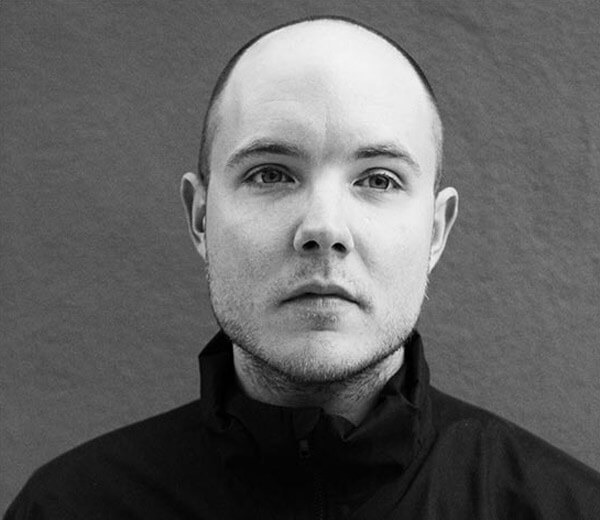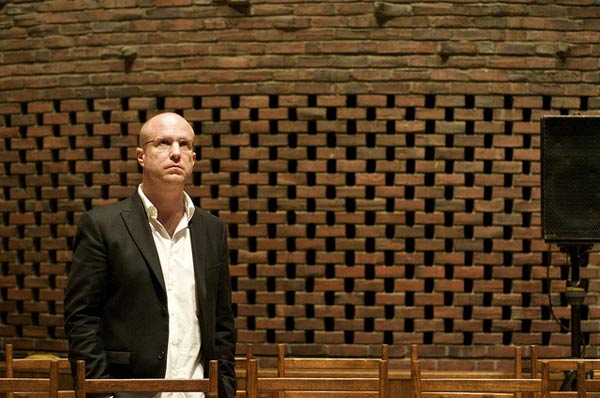 Over the last five years, Bill Kouligas’ independent record label, PAN, has grown to be an incredibly innovative and adaptive enterprise, demonstrating the courage to take on fresh talent while showcasing a number of works from established composers and musicians. Operating out of Berlin and New York, the label has gained its reputation through key releases that push the limits of what might constitute ‘experimental’ or ‘avant garde’ music by challenging the definitions that are ofen used to categorise it. Last year saw some exceptionally hard-hitting LPs from Rashad Becker – who masters all of the PAN releases at his reputable Dubplates studio – Mohammad and Marginal Consort in particular. 2014 is also set to be a memorable year for the label, most notably with a double album from Sicilian “live concrete” artist Valerio Tricoli, which is set to hit digital shelves in March.
Over the last five years, Bill Kouligas’ independent record label, PAN, has grown to be an incredibly innovative and adaptive enterprise, demonstrating the courage to take on fresh talent while showcasing a number of works from established composers and musicians. Operating out of Berlin and New York, the label has gained its reputation through key releases that push the limits of what might constitute ‘experimental’ or ‘avant garde’ music by challenging the definitions that are ofen used to categorise it. Last year saw some exceptionally hard-hitting LPs from Rashad Becker – who masters all of the PAN releases at his reputable Dubplates studio – Mohammad and Marginal Consort in particular. 2014 is also set to be a memorable year for the label, most notably with a double album from Sicilian “live concrete” artist Valerio Tricoli, which is set to hit digital shelves in March.

The PAN showcase at the Southbank Centre in London took place on Friday, February 7. It was billed as part of the venue’s Harmonic Series, which in this case acted as a celebration of the label’s “new audiovisual direction”. The event was held in the Purcell Room, which seats 365 and was sold out on the day. It seemed fitting that Mat Dryhurst, who now co-runs PAN with Kouligas, should kick things off with a lecture on the critical reception of art as well as its production – should the work of prolific artists today be reviewed in the same fashion as ‘traditional’ musicians of the past? The question remains open – a potential launching point for one of his future workshops – but Dryhurst spoke very quickly and there were no visuals to speak of, which made his argument tricky to latch on to. He rounded his talk off by playing a track he had sourced from the Facebook media feeds of audience members who had signed up to the event. The fifteen minutes of seemingly random pulses, static and garbled sound bite that he played back did very little to bolster any argumentation, or indeed provide an interesting composition, which is a shame, though it did carve the path for Rene Hell, who released his excellent “Vanilla Call Option” on PAN last year. Hell’s set was an elaboration on the tones, glitches and samples that made up his last album, and although it was impossible to know what was occuring on the other side of his laptop, it certainly portrayed the efforts of an artist who is at home in the production of digital experimental music. He transformed the Purcell Room into a misfiring series of electronic messages that hissed, shook and combusted within the confides of the venue. Those first two performances acted as a springboard for discussion about the presentation of such art, which has the potential to appear wonderful in the right setting. From the perspective of a live audience, however, it’s always difficult to know how one should respond to a man sitting stationary in front of a computer screen and pelting you with fractured noise.

When sound collagist Jar Moff took to his platform, he stood up while juggling the numerous layers of this year’s “Financial Glam” album behind a set of moving visuals by Lars Holdhus. The Greek artist was clearly engaged with his sound, ducking and diving, almost dancing to his crazed suite of gritty electro-acoustics and feedback bursts. It sounded great alongside the damaged and grainy textures of Holdus’ film, and raised the level of expectation as Lee Gamble and Dave Gaskarth made their way onto the stage. Gamble is responsible for my favorite PAN record to date, “Diversions 1994-1996”, a collection of early jungle mixtapes that have been completely reworked to create the artist’s personal take on the music he grew up with.
In collaboration with Gaskarth, Gamble depicted that process through mesmerizing and horrific sequences that saw a superb command of visual and audio presence – these samples exemplified the distorted relationship we have to sound as a consequence of portability, in addition to the prolific qualities Dryhurst spoke about; how having an infinite library of source material at one’s disposal can play into the fruition of some fascinating sound. The Gamble/Gaskarth set was loud and shocking in its abrupt end, which leaked into the most bizarre chapter of the evening.

Computational linguist and electronic musician Florian Hecker dropped a deluxe edition of his “Sun Pandämonium” on PAN back in 2011, and on the evening in question, premiered a collaboration with Turner Prize winner Mark Leckey. The projection was unlike anything else that evening. A pitch-shifted North English accent took on the role of a Samsung fridge, which narrated the different parts of its innards and its life cycle. Something in the region of an infomercial and a personal diary about the daily happenings of this household appliance, was marvelous to watch. There were laughs from the audience, but the majority sat in silence, awestruck. Once the film finished and the audience applauded, the lights flicked on and people began to leave. But just as the doors were opened, a high definition series of glitches and bleeps emerged from the speakers, and so another exhibition of sound ensued. I believe it was Hecker’s latest solo offering, but the lack of any introduction or a visible performer made for a most peculiar experience. People were getting up and walking out, talking to each other, shouting at each other as it went on; the set was surely an experiment in itself, a means of gauging a reaction. Unfortunately, a number of people left while the piece was in full swing. Whatever the sounds were, they tied the evening together in the strangest manner possible – where the most ‘experimental’ aspect lay in its presentation. The music was powerful and assertive, an exhibition of ideas and an exploration of our altering relationship with the technology we are only just coming to terms with as listeners and as artists. As a celebration of PAN’s 5 years, it resounded wonderfully. Let’s hope Kouligas can keep up the momentum.
























